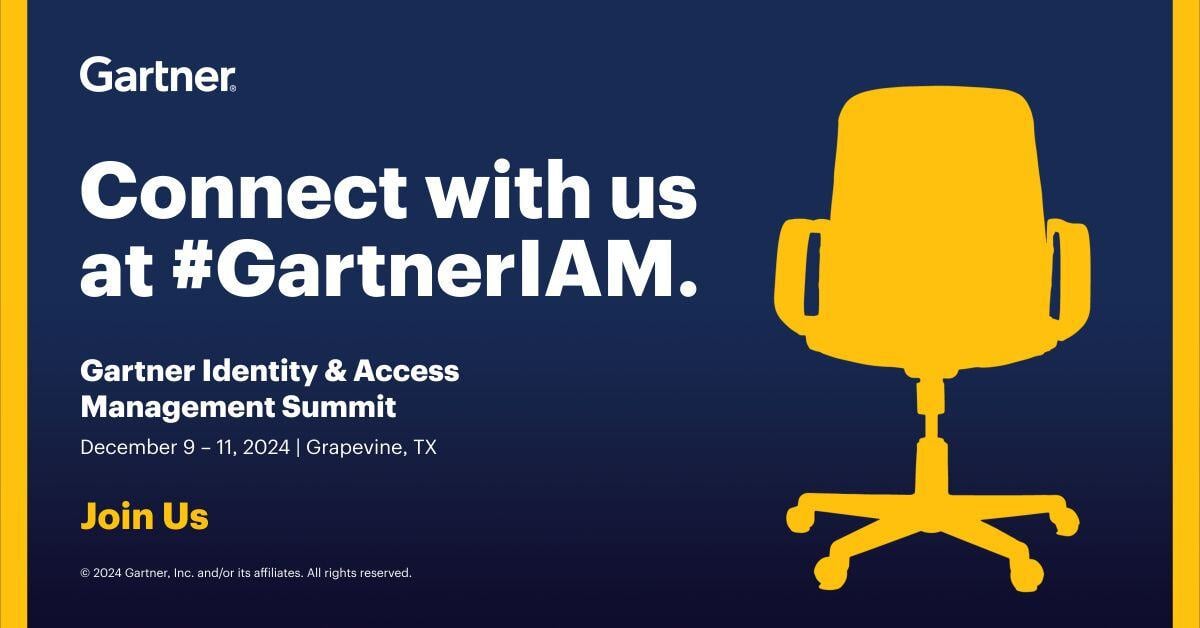Every year, the world’s organizations collectively spend tens of billions of dollars on Identity and Access Management (IAM) and Identity Governance and Administration (IGA) solutions. Yet, while there are many capable IAM and IGA products available, extending their reach to cover all the apps used by an organization — to deliver the desired outcomes and fast time to value — has proven challenging.
In this post, we’ll explain why that’s the case.
More importantly, we’ll show how — with a little help from Cerby — organizations of all stripes can get more value from the IAM and IGA solutions they’ve already deployed.
The importance of IAM and IGA
As a starting point, let’s quickly review what IAM and IGA are, and why they’ve become so important.
Identity and Access Management (IAM)
IAM consists of technologies and processes that help organizations to control and manage digital identities and the access associated with them. Leveraging broad integration throughout the IT environment, IAM provides essential functions including:
- Authentication: establishing with the necessary degree of confidence that a user (or non-human entity) genuinely is who (or what) they are purporting to be
- Authorization: determining and enforcing access rights and privileges (e.g., to applications, resources, data, etc.)
- Identity management: the behind-the-scenes CRUD (create, read, update, delete) operations that manage joiner/mover/leaver (JML) events and cycles
While these functions seem straightforward when described so succinctly, in concert they enable organizations to precisely control which entities have access to which resources at any point in time — a capability that’s critical for maintaining a strong security posture, enabling a productive workforce, and meeting compliance obligations.
In fact, IAM is so fundamental to today’s organizations — and so complex that building the functionality in house isn’t practical — that the global market for IAM solutions is expected to reach $43.1 billion by 2029.
Identity Governance and Administration (IGA)
IGA focuses more on identity lifecycle management (LCM) and entitlement management to enable security and compliance goals, through a combination of:
- Identity governance: Processes and policies pertaining to roles, access reviews, and separation of duties, plus requirements for logging, reporting, and analytics
- Identity administration: LCM, entity provisioning and deprovisioning, and entitlement management
Owing to its technology focus, IAM tends to fall squarely under the IT umbrella, whereas IGA often exists within the purview of broader governance, risk management, and compliance (GRC).
Like IAM, IGA is itself a significant market — projected to reach $12 billion by 2026.
The expected outcomes of IAM and IGA
While IAM and IGA each address important organizational needs and provide standalone value, their value compounds when such solutions are deployed in tandem.
The more easily, effectively, and efficiently that an organization can leverage its identity infrastructure, the better positioned it is to:
- Build and maintain a strong security posture that preserves productivity and avoids costly breaches by preventing, detecting, and responding to attacks that target or exploit identity
- Achieve stronger governance and compliance to manage regulatory risk, gain and maintain certifications, satisfy standards requirements, and meet contractual obligations
- Enable workforce productivity by ensuring every member of the team — including the extended workforce of contractors, partners, and other third parties — can access the applications and resources they need, when they need them
- Increase efficiency, accuracy, and scalability by replacing tedious, time-consuming, and error-prone manual processes with automated workflows
- Gain greater control over and visibility into how applications are being used
There are many excellent solutions available from the likes of Okta, Microsoft, Ping Identity, Saviynt, and others — but for an organization to get full value out of its IAM and IGA investments, these solutions need to be deployed with full coverage of the app ecosystem.
The disconnected app problem
Today’s organizations rely on a large and ever-growing number of apps. Even smaller companies may use well over 100 apps, and enterprises — many of which have reached immense scale through mergers and acquisitions — typically have hundreds.
Unfortunately, attaining full coverage across this ecosystem has proven to be elusive.
The reason? Disconnected apps.
Alternatively known as non-federated apps, non-standard apps, or unmanaged apps, these apps exist outside the integrated and automated controls organizations have invested so much time, effort, and money to implement — making them prime targets or tools for threat actors. In fact, a recent Ponemon report found that 53% of organizations have suffered a breach due to the inability to secure access to disconnected apps.
Why are so many apps disconnected?
The ability of an organization’s identity infrastructure to manage apps largely depends upon the apps providing APIs and supporting a variety of standards, including:
- SAML (Security Assertion Markup Language): an XML-based open standard that provides cross-domain single sign-on (SSO)
- WS-Federation (or WS-Fed): an older protocol from the WS-* series of services, typically used within Microsoft environments to enable SSO and federated identity
- SCIM (System for Cross-domain Identity Management): an API-based integration standard designed to streamline identity lifecycle management, primarily for cloud-based apps
- OIDC (OpenID Connect): an authentication protocol, based on OAuth 2.0, that uses via JSON Web Tokens (JWTs)
However, the reality is that over 40% of apps don’t support the necessary APIs or standards in the first place, while many others charge a premium to access APIs that enable identity security functionality like SSO and user management (the “SSO tax”).
Without these standards and APIs, IT teams are forced to stay in the past, trying to close the coverage gap through workarounds including:
- Tracking access in spreadsheets
- Writing custom scripts
- Employing ticketing systems (e.g., ServiceNow) that trigger manual fulfillment workflows to request and grant access
- Building and maintaining custom integrations for high-priority apps
This approach is costly, vulnerable to human errors, and doesn’t scale.
Closing the app gap: extending identity and governance controls without adding complexity
Ultimately, disconnected apps artificially limit the reach of your IAM and IGA tooling. In doing so, they undermine your desired outcomes and impose costly and unscalable workarounds that hinder security, introduce audit/compliance risks, and harm productivity.
But what if your disconnected apps weren’t disconnected anymore?
Instead of forcing you to wait for app updates or to rebuild your identity infrastructure, Cerby integrates with your existing identity stack to securely manage and govern disconnected apps — and we do it without requiring APIs, costly integrations, or manual workarounds.
Essentially, we augment the IAM and IGA solutions you already have, extending their capabilities to enable:
- Enterprise single sign-on (SSO) for any app, right from your existing identity provider (IdP), enhancing security and convenience for your workforce
- Multi-factor authentication (MFA) on any app, including auto-enrolling users for complete coverage, contributing a strong layer of defense against account takeovers (ATOs)
- Automated lifecycle management, providing your team with just-in-time (JIT) provisioning while dramatically reducing the risks stemming from orphaned accounts and lingering access
- Execution of governance actions and comprehensive data collection from disconnected apps, fully incorporating them into your governance framework for complete compliance and audit readiness
- And much more!
Maximizing the return on IAM and IGA investments
By connecting every app to your identity stack, Cerby helps you get full value out of the significant investments you’ve already made:
- Seamless IAM and IGA integration enables automatic synchronization of user groups and permissions from your identity tools to keep access up to date
- Automated provisioning and deprovisioning for disconnected apps helps eradicate manual processes, reducing security risks and IT workload
- Consistent enforcement of access controls allows you to extend governance policies across all apps, reducing security gaps and complying with regulatory requirements
- Centralized user management for disconnected apps unlocks a unified console for full control and straightforward administration
- Enhanced visibility helps to consolidate fragmented identity data and shine a light on shadow IT — simplifying audits, access reviews, and compliance reporting
Future-proofing your identity strategy with Cerby
To quickly sum up: getting full value out of your IAM and IGA investments requires full coverage of your app ecosystem — which itself is dependent upon apps providing APIs and supporting identity standards.
Absent these APIs and standards, IT teams are forced to prioritize which apps are worthy of significant investments to manually integrate them (presuming time and resources are even available), while managing others via tedious, error-prone, and unscalable workarounds.
Cerby completes your identity security stack by extending access controls and governance to every app — no matter how disconnected. From automating repetitive security workflows like password updates and MFA enforcement, to centralizing user management, Cerby brings unified control, protection, and visibility to your entire app ecosystem.
We already support hundreds of applications through our Cerby Application Network — and we’re continuously expanding that list.
Our vision is simple: a world where identity security is fully automated — eliminating human error and leaving no app behind.
Cerby makes that future possible, today.

.png?width=1500&height=428&name=Secure%20banner%20(2).png)


